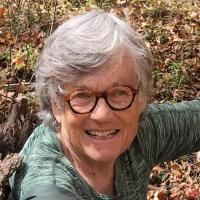


How does it happen that citizens who consider themselves deeply moral can believe that some of their fellow citizens embody a danger so lethal that they must be eliminated? In "The Nazi Conscience," I examined public culture during the so-called normal years of the Third Reich (1933-1939) and identified the key role of popular racial science and expert opinion in convincing mainstream Germans that Jews, homosexuals, Roma (Gypsies) were so "alien" that they scarcely counted as human at all. In my current research I ask similar questions about contemporary Europeans' reactions to Muslim women who wear the headscarf, or "hijab." I am less concerned with fanatics' hate speech than with the subtle prejudices common in generally liberal milieus. Identifying visual and textual representations of the "hijab" in mass-market media, I analyze the production of ethnic panic in countries where immigration is economically essential, but immigrants are culturally marginalized. In my research and courses, I examine the formation of ethnic fears that endow the "us" with the conviction they have been summoned to rid the world of an evil "them."
| Office Location: | 226 Classroom Bldg, Durham, NC 27708 |
| Email Address: |   |
| Ph.D. | Rutgers University | 1969 |
| M.A. | Columbia University | 1964 |
| M.A. | Columbia University | 1964 |
| B.A. | University of Wisconsin, Madison | 1962 |
Current projects: Ethnic identity formation as manifested in experts', politicians', and feminists' responses to women wearing Muslim headscarves public spaces.
How does it happen that citizens who consider themselves deeply moral can believe that some of their fellow citizens embody a danger so lethal that they must be eliminated? In "The Nazi Conscience," I examined public culture during the so-called normal years of the Third Reich (1933-1939) and identified the key role of popular racial science and expert opinion in convincing mainstream Germans that Jews, homosexuals, Roma (Gypsies) were so "alien" that they scarcely counted as human at all. In my current research I ask similar questions about contemporary Europeans' reactions to Muslim women who wear the headscarf, or "hijab." I am less concerned with fanatics' hate speech than with the subtle prejudices common in generally liberal milieus. Identifying visual and textual representations of the "hijab" in mass-market media, I analyze the production of ethnic panic in countries where immigration is economically essential, but immigrants are culturally marginalized. In my research and courses, I examine the formation of ethnic fears that endow the "us" with the conviction they have been summoned to rid the world of an evil "them."
I have benefited from research support from the Rockefeller Foundation, the National Endowment for the Humanities, the German-Marshall Fund, Duke University, the American Council for Learned Societies, the Guggenheim Foundation, the American Academy in Berlin, and the National Humanities Center. Mothers in the Fatherland received several awards: as a finalist for the National Book Award non-fiction nomination, 1987; The Boston Globe-Winship Book of the Year Award, 1987; The Berkshire Conference 1987 Book Award; The Jesuit Honor Society book of the year; and it was one of the New York Times and Liberation's (Paris) best 100 books of 1987 and 1990, respectively.